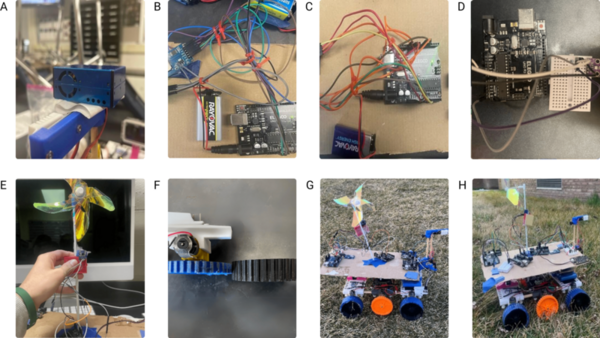Rover engineered to evaluate impacts of microclimatic parameters on pediatric asthma in Dallas schools
(1) Frisco High School
https://doi.org/10.59720/24-269
Pediatric asthma remains a significant health vulnerability for Dallas students due to atmospheric pollutants. While vegetation is known to lower pollution levels, the relationship between specific microclimatic (local atmospheric) and meteorological parameters and pediatric asthma rates in urban schools—and how vegetation modulates this relationship—is poorly understood. This study addressed this gap by examining the extent to which these parameters increase pediatric asthma vulnerability (PAV) in Dallas schools at the census tract level. We hypothesized that schools in census tracts with a lower normalized difference vegetation index (NDVI) would have a higher PAV compared to schools in more vegetated tracts due to increased exposure to microclimatic parameters, including particulate matter (PM), carbon monoxide (CO), and carbon dioxide (CO₂). Using a novel, cost-effective mobile rover with Arduino-based sensors, we measured these parameters at 3 sublocations in 10 Dallas schools on July 13th and 20th, 2024. In experimental schools with low NDVI, fine PM concentrations were 27% higher, coarse concentrations were 55% higher, CO was 2% higher, and CO₂ was 19% higher. By analyzing emergency department (ED) visits, chronic obstructive pulmonary disease (COPD) prevalence, and average inhaler prescription data to assess PAV, we found experimental schools had 78% more ED visits, 48% higher COPD prevalence, and 124% fewer inhaler prescriptions compared to control schools, suggesting that elevated PM and CO₂ concentrations are associated with increased PAV in census tracts of experimental schools, particularly in downtown and southeast Dallas. These findings are important for informing Dallas school policies governing atmospheric safety and healthcare equity.
This article has been tagged with: